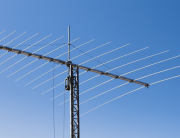To stream video in standard definition, you need a download speed of at least 2 Mbps. To stream in high definition, you need at least 4 Mbps. With an average download speed of more than 20 Mbps, a fixed mobile broadband connection is fast enough to support video streaming on multiple devices at once. Let’s take a closer look at 4G LTE speeds and at how your local network divides internet bandwidth to connect multiple devices to a single 4G LTE connection.
How 4G LTE Supports Video Streaming
There was a time when you couldn’t stream videos on a mobile broadband connection, but that was a long time ago. A new report by the mobile analytics company OpenSignal finds that – in the last year – the download speed, upload speed, and latency of mobile internet have grown across all major carriers. Today, 4G LTE is fast enough to support the best quality video.
Three of the four major mobile internet providers now offer average download speeds of more than 20 Mbps. Two providers, Verizon and T-Mobile, now offer average upload speeds of more than 7 Mbps. All four providers now offer an average ping of less than 60 ms. These speeds put providers on track to provide broadband internet speeds for the majority of their users.
How Your Network Divides Bandwidth
With fixed mobile broadband, you can stream video on your television, your laptop, and your tablet by connecting to a local WiFi network backed by 4G LTE. This connection makes it possible to stream video content, even if your home is located too far from the local cable hub to use wired internet. Better still, you only need one 4G LTE connection to support all your devices.
Your fixed mobile broadband connection shares a set amount of internet bandwidth with all the devices on your local network. Your router splits this bandwidth evenly or, if you’re using load balancing software, it makes more bandwidth available for activities like video streaming.
Most routers have built-in load-balancing software that you can customize by navigating to your router’s Quality of Service (QoS) settings. To access these settings:
- Type your router’s IP address into the address bar of the internet browser on your computer or phone. Most routers have the default LAN IP address 192.168.0.1 or 192.168.1.1, but here’s a full list of default IP addresses.
- Login to access the setup page. The default password is usually “admin,” but here’s a full list of default router passwords.
- Each router manufacturer arranges its setup page a little differently. Look for Wireless Setting or Advanced Network Settings in the menu.
- Look for QoS Settings in the submenu. If you can’t find it, contact your router manufacturer for assistance.
To make video streaming smoother, you can set up a “rule” in your QoS settings that prioritizes video traffic over other types of online traffic.
How to Stream Video on Multiple Devices at Once
While most wireless routers can support up to 250 devices at one time, most fixed broadband connections don’t have the speed to support video streaming on more than a few devices at once. To find out how much simultaneous streaming on multiple devices your connection will support, determine your network’s download and upload speeds with a speed test.
Now that you know how fast your connection is, let’s take a look at how many simultaneous video streams it can support. This table shows the maximum number of video streams a connection can support, based on its download speed and the video quality of the streams:
| Download Speed | 480p (at 3 Mbps) | 720p (at 4 Mbps) | 1080p (at 5 Mbps) | 4K (at 15 Mbps) |
|---|---|---|---|---|
| 40 Mbps | 13 Streams | 10 Streams | 8 Streams | 2 Streams |
| 20 Mbps | 6 Streams | 5 Streams | 4 Streams | 1 Streams |
| 10 Mbps | 3 Streams | 2 Streams | 2 Streams | – |
| 5 Mbps | 1 Streams | 1 Streams | 1 Streams | – |
For more information about streaming video on your fixed mobile broadband connection, give us a call today. We can help connect you with the fixed 4G LTE plan that’s right for your household.







Leave A Comment